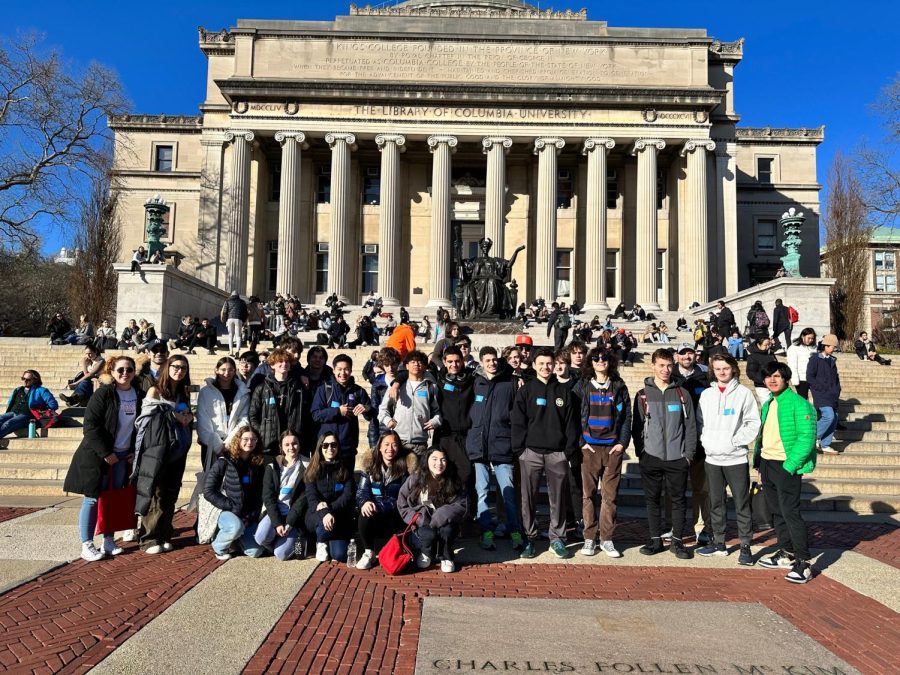College Visit Highlights: Columbia University
BASIS Independent Brooklyn students tour Columbia University
December 1, 2022
Diego G. is a junior at BASIS Independent Brooklyn. He wanted to start a series to share highlights from college visits to help other students learn about the options open to them. This is the first article in his series “College Visit Highlights.”
Like most high school students, I plan on going to college. To this end, I attended the Columbia University college visit, and I am here to share the highlights. The tour started off at the base of the low library and the Alma Mater statue. I was struck by how many people showed up on a Thursday and to be honest, my first thought was “look at the competition”. Because of the size of the crowd, it was split up into five groups by a tour guide who shared my name, and that coincidence managed to catch me off guard for the entire hour I was there.
Our first stop was the bridge by the law school, which had an impressive view of both Harlem to the north and midtown to the south. At this juncture we learned about the partnerships Columbia has with museums and theaters of New York City, giving students free access to 23 museums and tickets to various plays at subsidized prices, study abroad opportunities on every continent including Antarctica, that students were assigned an academic advisor who partners with them for all four years even before they start classes, and that about 55% of students live on campus. From there we moved onto the northern edge of the campus, where it was explained that Columbia is made up of four colleges, Barnard College, Columbia College, Columbia Engineering, and Columbia School of General Studies. Here, we learned of the focus Columbia has on research, and of the sheer variety of research opportunities, there are, as each professor is required to have at least one student assistant slot open for any research they would like to undertake. Aspects of the flexibility of the core curriculum were also touched on, as even though there are requirements students have to fill in order to graduate, there are many available paths to fulfill these requirements. For example, although students need to earn two gym credits, they can opt to take classes like Salsa and Fencing as opposed to more traditional ones.
Our next stop was at the base of a lion statue, where it was revealed that beneath the college, there was a five-story gym facility, featuring multiple general exercise areas and an Olympic size swimming pool. Various school culture details were also touched on, and multiple upcoming events were shared. By this point, we had walked the entire northern edge of the campus, so I was beginning to get a feel for the size of the campus, and my overall takeaway was that it was big enough to keep me interested while not enough to get lost wandering around. After the statue, we got to walk across the lawns to the dorms. People had mixed opinions of them, but I thought they were very spacious and accommodating. Dorms come in both singles and doubles, and it was established that almost everyone who chose their preference would get them. At the dorms, we learned of the multiple food options and how the different meal plans affected campus life.
For more information on Columbia University, you can visit their Undergraduate Admissions website – https://undergrad.admissions.columbia.edu/


